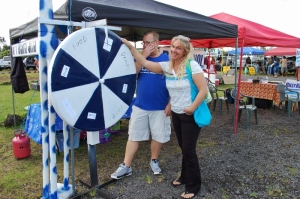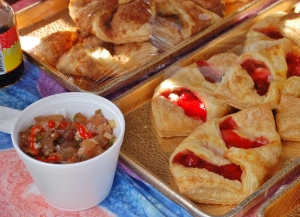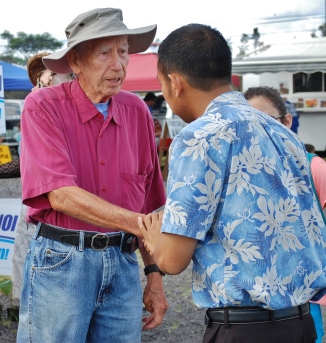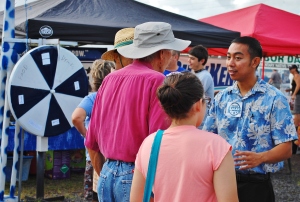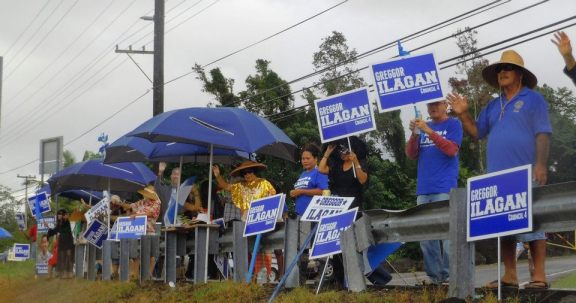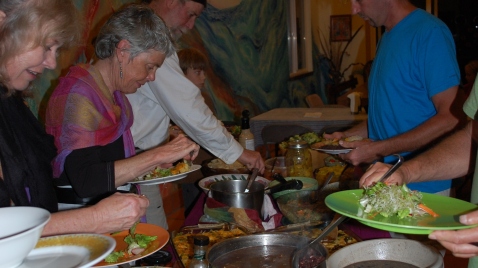A soon-to-be registered student organization (RIO) invites students of any skill level to play soccer at 11:30 a.m. every Sunday at the T.C. Ching field on lower campus.

There was a small group this day, but everyone was in good spirits nonetheless. Photographs by Harley Diven
“We’re looking for anyone who is down to have fun, down to be open-minded and try something new… We want more friends, more people to hit up,” says UH Manoa student Matthew Kubick (pictured above, second from left).
Some play what is aptly referred to as “Soccer Sundays” to quench their passion for soccer or to get exercise, and some just come to hang out. The focus is on relieving the stress of the work week by doing something fun and laid-back on the weekend.
“It’s not necessarily about the competition; it’s more just about meeting friends and having fun,” says Kubick.
Health benefits
Indeed, research has shown that playing soccer has not only physical rewards, but mental rewards as well. A 2009 study conducted by Siobhain McArdle that was reported to the Annual Conference of the British Psychological Society’s Division of Clinical Psychology found that groups of men from ages 18-40 who participated in a soccer-based exercise program had “showed significantly lower symptoms of depression” than those who did not participate in the exercise program.
According to Science Buzz, a study by the University of Copenhagen compared the physiological benefits of running versus playing soccer. The research concluded that soccer may be even better for your body than running; the soccer players body fat went down, muscle mass went up, and actually felt less tired than the runners did.
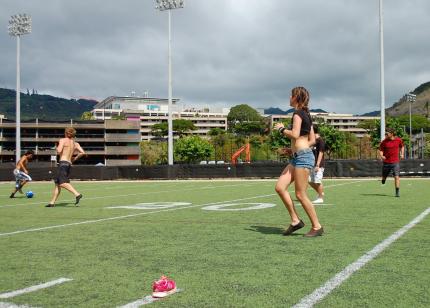 Switching up the rules
Switching up the rules
Because Soccer Sundays’ goal is simply to have fun, the players don’t insist upon adhering to the traditional rules of soccer. Depending on the skill levels of the players that day, they may create uneven teams to make the game more competitive. The games are usually played barefoot or, if the turf is too hot, with socks. And, if the ball goes out of bounds, they keep playing it. It’s as if the field is the widest field imaginable.
The conception of the club
Soccer Sundays came to fruition when Kubick and his roommates asked one of their friends what their goals were.
“We like to help people reach their goals,” mentions Kubick.
The friend spoke English as a second language, so he wasn’t clear on the meaning of goals. Kubick and his friends explained it was somewhat similar to a passion. The friend answered that he was passionate about soccer, and thus Soccer Sundays was born.
Soccer Sundays typically consists of around 8 players, hence the open invite to anybody who is interested to show up and play.
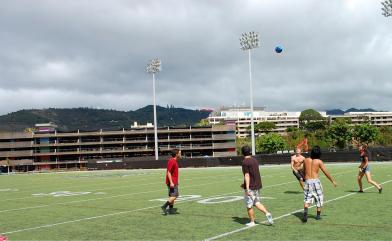
At one point, they were simply asking anybody who walked by if they wanted to join in, remarks Kubick.
When asked why people should come by and check out what Soccer Sundays is all about, Kubick answered, “Some people are looking for more friends, but have no way to initiate it. The people we have right now are open-minded, not judgmental or anything like that. And, yeah, it’s a good way to exercise.”
The group is in the process of completing and submitting the required paperwork to become an official RIO, at which time it intends to register to use the practice field outside of Gateway.
